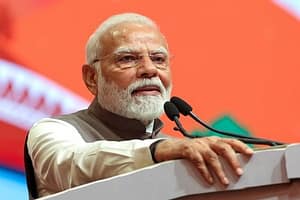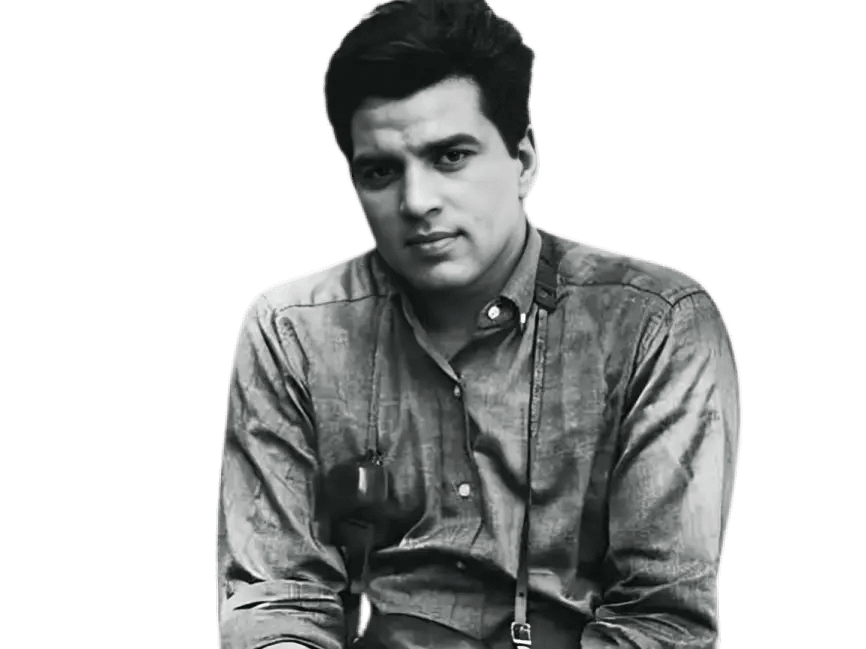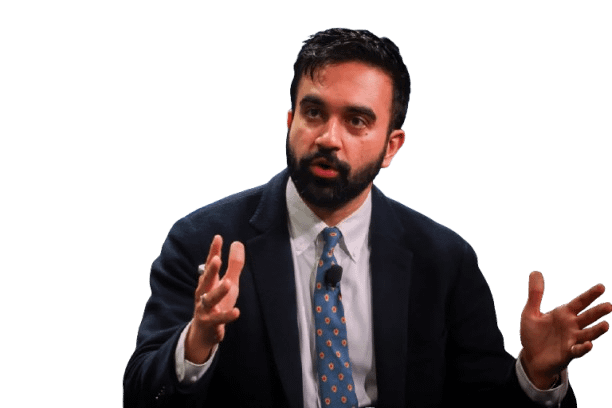Narendra Modi: From Tea Seller to India’s Most Influential Political Leader Ever.

Narendra Modi Early Life and Background
Narendra Damodardas Modi was born on 17 September 1950 in Vadnagar, a small town in Mehsana district of Gujarat, India. He was the third of six children born to Damodardas Mulchand Modi and Hiraben Modi, belonging to a Gujarati Hindu family of the Modh-Ghanchi-Teli (oil-presser) caste, classified as Other Backward Class (OBC) in India.
Modi’s early life was marked by poverty. His father ran a small tea stall at the Vadnagar railway station, where young Narendra helped by serving tea to passengers. Despite these hardships, Modi was a curious child with an inclination toward spirituality and nationalism. He completed his schooling in Vadnagar and showed early leadership qualities, taking interest in debates and theater.
At the age of 8, Modi became associated with the Rastriya Swayamsevak Sangh (RSS), a Hindu nationalist volunteer organization. His association with RSS significantly shaped his ideological and political outlook.
Modi left home at the age of 17 to travel across India. He visited various religious centers and monasteries, including the Belur Math (Ramakrishna Mission), the Himalayas, and the ashrams of Rishikesh, leading a reclusive life for a couple of years before returning to Gujarat.
Education and RSS Work
Narendra Modi joined full-time work with the RSS in the early 1970s. He became a prochiral (campaigner) and was assigned to work in various parts of Gujarat. During this time, he also pursued higher education. He earned a Bachelor of Arts degree in Political Science from Delhi University through distance learning, followed by a Master’s degree in Political Science from Gujarat University.
As an RSS worker, Modi was known for his discipline, organizational skills, and dedication. His role involved coordinating activities, managing logistics, and spreading ideological teachings. These years honed his skills in public speaking, networking, and political strategy.
Entry into Politics: Rise in BJP
Modi officially entered politics in 1985, when he joined the Bhartiya Janata Party (BJP). His strong background in RSS made him a natural choice for organizational responsibilities. He quickly rose through the party ranks due to his strategic thinking and management capabilities.
In 1995, Modi played a key role in the BJP’s victory in the Gujarat Assembly elections. He helped build the party’s base across the state. As the National Secretary of BJP, he handled party affairs in Haryana and Himachal Pradesh.
His political strategy and leadership during L.K. Advani’s Rath Yatra (1990) and Murli Manohar Joshi’s Ekta Yatra (1991) brought him national attention.
Chief Minister of Gujarat (2001–2014)
Modi’s major political breakthrough came in October 2001, when the BJP leadership appointed him as the Chief Minister of Gujarat, replacing Keshu Bhai Patel. Initially, he was not a member of the Gujarat Legislative Assembly, but he won a by-election in Rajkot to secure his position.
2002 Gujarat Riots
Modi’s tenure as Chief Minister began under the shadow of controversy. In February 2002, a train carrying Hindu pilgrims was set on fire in Godhra, killing 59 people. The incident triggered widespread communal riots across Gujarat, leading to the death of over 1,000 people, mostly from the Muslim community.
Modi’s government faced intense criticism for alleged inaction and complicity during the riots. Though several court inquiries and investigations found no direct evidence against Modi, the controversy continued to haunt his political career, drawing global criticism and even travel bans from countries like the United States.
Development and Governance Model
Post-2002, Modi rebranded himself as a leader focused on development and economic growth. His “Gujarat Model” emphasized infrastructure development, industrial investment, electricity reforms, and efficient governance.
Under Modi, Gujarat witnessed rapid economic growth, improved power supply, and major industrial projects like the Vibrant Gujarat Summit. Critics, however, pointed out disparities in social development indicators, education, and healthcare.
Despite criticisms, Modi led BJP to three consecutive victories in Gujarat Assembly elections (2002, 2007, and 2012), cementing his image as an efficient and decisive administrator.
Prime Minister of India (2014–Present)
2014 General Elections
In 2013, the BJP declared Modi as its Prime Ministerial candidate for the 2014 general elections. His campaign, centered on the slogan “Achhe Din Aane Wale Hain” (Good days are coming), promised economic revival, job creation, and anti-corruption governance.
Modi undertook a massive nationwide campaign, using social media, mass rallies, and innovative strategies. The result was historic. In May 2014, the BJP won 282 seats, becoming the first party in 30 years to secure an absolute majority in the Lok Sabha.
Modi was sworn in as India’s 14th Prime Minister on 26 May 2014.
First Term (2014–2019): Key Initiatives and Reforms
- Swachh Bharat Abhiyan (Clean India Mission)
Launched on 2 October 2014, this campaign aimed to eliminate open defecation and improve sanitation. - Jan Dhan Yojana
An ambitious financial inclusion initiative that opened millions of bank accounts for the poor. - Make in India
Focused on boosting domestic manufacturing and attracting foreign investment. - Digital India
Aimed at transforming India into a digitally empowered society and knowledge economy. - Goods and Services Tax (GST)
Implemented in 2017, GST was India’s biggest tax reform, creating a unified national market. - Demonetization (2016)
On 8 November 2016, Modi announced the demonetization of ₹500 and ₹1000 currency notes, aiming to fight black money, corruption, and terrorism funding. The move received mixed responses. - Surgical Strikes and National Security
After the 2016 Uri attack, India conducted surgical strikes against terror camps in Pakistan-occupied Kashmir, projecting a strong stance on national security.
Second Term (2019–Present): Continuing Transformation
Modi secured a landslide victory in 2019, with BJP winning 303 seats. His second term focused on major structural and ideological changes.
Major Policies and Events
- Abrogation of Article 370
In August 2019, Article 370, granting special status to Jammu & Kashmir, was revoked. The state was reorganized into two Union Territories—Jammu & Kashmir and Ladakh. - Citizenship Amendment Act (CAA)
Passed in December 2019, it offered citizenship to non-Muslim refugees from Pakistan, Afghanistan, and Bangladesh. The act sparked protests nationwide. - COVID-19 Pandemic Response
Modi announced a strict nationwide lockdown in March 2020, leading to mixed outcomes. He launched PM CARES Fund, and India undertook massive vaccination drives under the “Vaccine Maitri” initiative, supplying vaccines globally. - Farm Laws and Protests
In 2020, three farm laws aimed at liberalizing agriculture markets were passed but triggered large-scale protests. In 2021, Modi announced their repeal. - Digital and Infrastructure Push
Initiatives like Gati Shakti, PLI Schemes, Startup India, Ujjwala Yojana, and Smart Cities Mission were reinforced. - International Diplomacy
Modi enhanced India’s global profile through “Act East” policy, strategic partnerships with the US, Europe, and Asia, and participation in forums like G20, BRICS, and QUAD.
Personality and Leadership Style
Modi is known for his charismatic oratory, strong leadership, and image-driven politics. His speeches often invoke cultural pride, nationalism, and personal anecdotes, connecting deeply with the masses.
He is a teetotaler, vegetarian, and maintains a highly disciplined lifestyle. Modi is also an avid writer and poet, and has authored several books, including Exam Warriors for students.
Modi’s use of social media, including platforms like Twitter, Facebook, and YouTube, is highly effective. His “Mann Ki Baat” radio program reaches millions across the nation every month.
Awards and Recognition
- Time magazine featured him multiple times on its list of the 100 most influential people.
- UN Champions of the Earth Award (2018) for environmental leadership.
- Highest civilian honors from countries like Saudi Arabia (King Abdulaziz Sash), UAE (Zayed Medal), Russia (Order of St. Andrew), and the US (Legion of Merit).
- Global appeal, with diaspora communities hosting grand receptions during his foreign visits, such as in Madison Square Garden (USA) and Wembley Stadium (UK).
Criticism and Controversies
While admired for his vision and governance, Modi’s leadership has also drawn significant criticism:
- Authoritarianism and Centralization of Power
Critics argue Modi undermines institutional autonomy and concentrates power in the Prime Minister’s Office. - Minority Concerns
Policies like CAA, NRC, and alleged silence during communal incidents have raised fears among minority communities. - Media Control and Freedom of Expression
His government is accused of stifling dissent and influencing media narratives. - Unemployment and Economic Slowdown
Though initiatives like Skill India were launched, unemployment and slow job growth remain pressing issues.
Legacy and Impact
Narendra Modi is one of the most influential and polarizing leaders in modern Indian history. His legacy is multifaceted:
- Transformation of Indian politics from coalition-era consensus to strong central leadership.
- A shift toward Hindu nationalism in mainstream governance.
- Global recognition as a statesman from the Global South.
- Deep and lasting changes in economic policies, digital infrastructure, and national security doctrines.
Whether hailed as a reformer or critiqued as a populist, Narendra Modi has undeniably reshaped India’s political and cultural landscape, leaving an imprint that will be studied for generations.




5 thoughts on “Narendra Modi Prime Minister of India.”